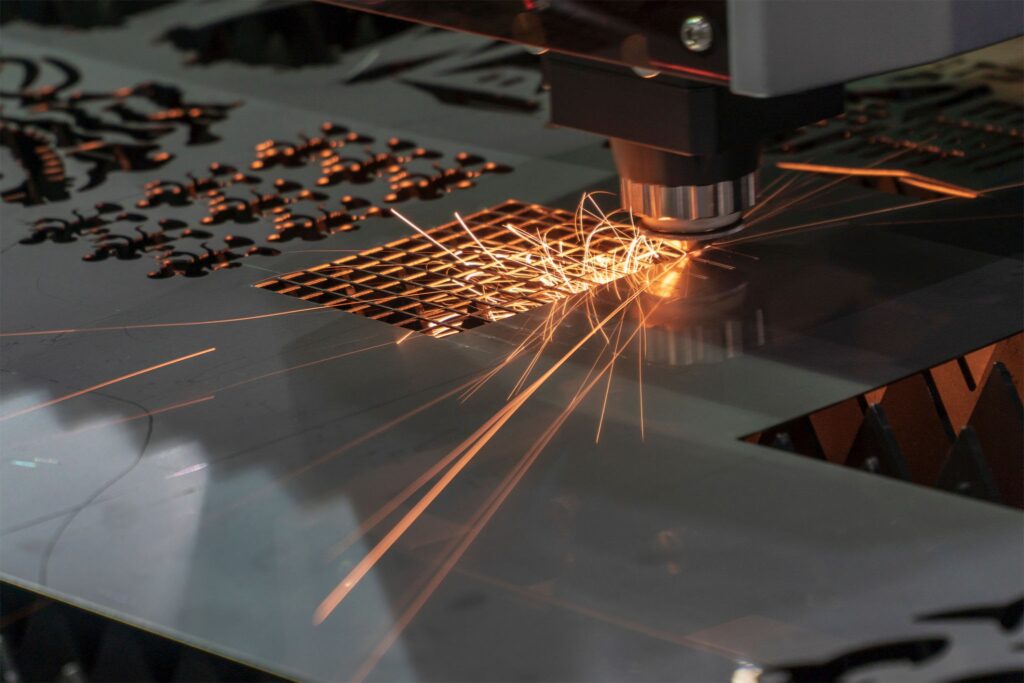Aluminum, a lightweight and corrosion-resistant metal, is widely used across various industries, from automotive to aerospace. Laser cutting, celebrated for its precision and adaptability, is a fundamental technology in processing aluminum, enabling intricate designs and high-quality cuts. In this article, we will explore aluminum as a material, its applications, and the pivotal role of laser cutting in shaping this versatile and lightweight metal.

1. Overview of Aluminum and Its Applications
Aluminum, a lightweight and malleable metal, boasts an array of applications:
- Aerospace: Aluminum is widely employed in aircraft manufacturing due to its lightweight nature and strength. It reduces overall weight, improving fuel efficiency.
- Automotive: In the automotive industry, aluminum is used for its lightweight properties to enhance vehicle performance and fuel efficiency.
- Construction: Aluminum is used in architectural elements, window frames, and cladding due to its durability and resistance to corrosion.
2. Basic Properties of Aluminum and Its Applications
Lightweight:
- Aluminum’s low density makes it an ideal choice for applications where weight reduction is a priority.
Corrosion Resistance:
- Aluminum naturally forms a protective oxide layer, enhancing its resistance to corrosion.
Ductility:
- Aluminum is highly malleable and can be easily shaped into various forms, making it suitable for a wide range of applications.
Challenges and Advantages of Laser Cutting in Aluminum Processing:
Laser cutting is an essential process in the fabrication of aluminum, offering advantages such as high precision, minimal material wastage, and reduced contamination. Challenges include efficient material removal and preventing thermal effects.
3. Laser Cutting Technology
Laser Cutting Techniques for Aluminum:
Various laser cutting techniques are commonly employed for aluminum, including:
- Fiber Laser Cutting: High-power fiber lasers offer precise and efficient cutting with minimal heat-affected zones.
- CO2 Laser Cutting: Suitable for thicker aluminum sheets and bulk materials.
Principles of Laser Cutting:
Laser cutting involves the interaction between a high-intensity laser beam and the material. The laser’s energy is absorbed by the aluminum, leading to localized heating and vaporization, which effectively removes material.
Types of Lasers for Aluminum Cutting:
| Laser Type | Wavelength | Suitability |
|---|---|---|
| Fiber Laser | 1.06 µm | High-speed, efficient cutting with precision. |
| CO2 Laser | 10.6 µm | Ideal for thicker aluminum sheets and bulk material cutting. |
4. Material Processing and Challenges
Effective Laser Cutting of Aluminum:
Efficient laser cutting of aluminum necessitates addressing various challenges, including:
- Material Removal: Ensuring efficient ablation of aluminum without excessive debris.
- Thermal Effects: Managing the heat-affected zone (HAZ) to prevent damage to the material’s properties.
- Contamination: Minimizing contamination from debris and gas residues.
Tables can be used to discuss the impact of process parameters on cut quality:
| Parameter | Impact on Cut Quality |
|---|---|
| Laser Power | Influences cutting speed and depth. |
| Wavelength | Affects the material’s absorption and, consequently, the cutting process. |
| Pulse Duration | Determines the energy delivery, which impacts the cut quality. |
| Scan Speed | Controls the speed of the laser beam and its effects on the material. |
5. Laser Cutting in Aluminum Applications
Role of Laser Cutting in Aluminum Processing:
Laser cutting plays a pivotal role in shaping aluminum for various applications, enabling intricate designs and high-quality cuts, enhancing the overall performance and aesthetics of aluminum-based products.
Advantages over Traditional Methods:
Compared to traditional mechanical methods like milling or stamping, laser cutting offers several advantages, including:
- Higher precision and control over the cutting process.
- Reduced material waste and increased yield.
- Minimized risk of damage or contamination, especially in critical applications like aerospace and automotive components.
Case Study: Laser Cutting in Automotive Aluminum Components
A compelling example of laser cutting’s efficacy in aluminum processing can be found in the automotive industry. Aluminum is used in critical vehicle components, such as chassis parts and body panels, to reduce weight and improve fuel efficiency. Laser cutting technology enables the precise shaping of these components, ensuring their quality and performance in modern vehicles.
